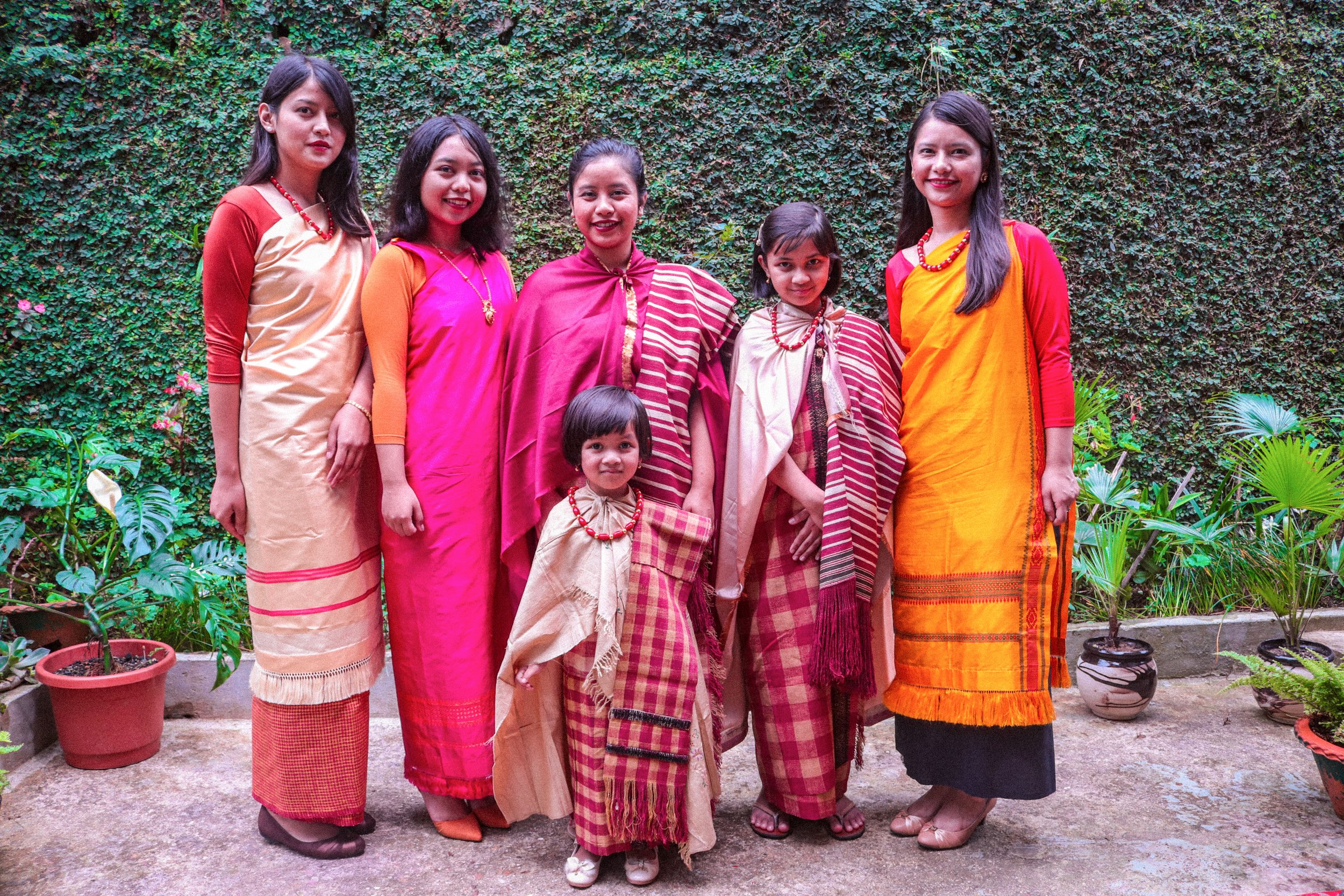Food, On Behalf of My People
Words by Medaaibok Fancon
Images by Partha Dey
This is going to sound cliche, but do you remember the scene from the Academy Award winning film Ratatouille, where Anton Ego is transported to his childhood after eating Remy’s ratatouille? I cannot stop thinking about it as I sit down to write this piece. The movie has efficiently reiterated the fact that we constantly compare food we eat with the memory of tasting them for the first time. And in most cases, it is cooked by our mothers. This visceral quality that food has beyond the taste and the smells is as universal as the warmth of our mother’s kitchens, the aroma of our favourite food wafting through the air, filling our homes and heart with love and a truckload full of memories from our childhood.
The best part about being raised by strong women in a matrilineal society with such close knit families should be the love and importance for food. I belong to the tribe of Khasis, an indigenous people from the state of Meghalaya. We are matrilineal, tribal and the warmest people you’ll ever meet. The Khasis have distinct eating habits which may be similar, if not the same as the other tribes of the region. A typical Khasi family kitchen is packed - both with people and food - during meal prep time. It’s walls have silently stood there listening to our stories of bonding, laughter and life over the years.
Most of my childhood was spent listening to my family members narrate tales of the yesteryear. The culture of the family and the tribe are heard and remembered through keen observation. I’m sure you can relate when I say that none of us have had a special cooking class that we take from our mothers. Although, when we’re left to fend for ourselves, somehow we’re able to recreate our childhood favourites. Every family has their own interpretation of traditional recipes and methods of making it. If not for my mother’s constant push to observe her in the kitchen, I wouldn’t be so well-versed in the traditional ways of preparing food that has been in the family for generations.
The staple food of the Khasis is the local wild rice which is a short grain variety consisting of both white and red, grown throughout the land. Rice is eaten throughout the day in our meals or as a variety of locally made rice cakes usually served with tea. A typical meal of the everyday consists of white rice with spicy meat or fish curries, meat stews or dry fish stews along with various condiments like sautéed wild vegetables or locally available vegetables, herbs, green salads and chutneys to mimic our surroundings - a harmony of nature.
Traditionally, rice is boiled in vessels called Khiew ‘sla (made of brass) while most curries and vegetables are cooked in locally made pans called Khiew Nar (made of black cast iron). Specially shaped earthen pots called ‘Saraw’ are used for making rice bread and rice cakes. Like most traditional Indian kitchens, a fireplace called ‘ka Dpei’ masoned with stones and clay, holding logs of firewood on the side, to give a smoky flavor distinct to the khasi cuisine. During our winter break in the village, I remember one of my errands as a child included fetching and piling up thinly cut firewood from the barn and stocking them for the day’s cooking.
Home is where the food is. And the longing for your ‘ghar ka khana’ arises only when we are far away from it. Most of us come to realize the value of our local cuisine when in a foreign land, where the usual ingredients we grew up with are nowhere to be found. I remember during my long stays away from home, I would miss home and family dearly. Food is what comforted me. Food of my homeland, my mother’s recipe brings back warm memories instantly. It is a nourishment for the soul that nothing else can provide.
Khasi Cuisine is simple yet rich in flavor. While there are many that need a mention, the following are few of the dishes that remind anyone from the Khasi hills, of home:
Jadoh
Jadoh (‘Ja’ for rice and ‘Doh’ for meat) is the most popular meat pulao. It tastes best when made with short grained rice with meat - lard of pork, chicken or sometimes a fish head - with a blend of finely chopped onions, a thin slice of ginger, garlic and black pepper. Unlike most pulao dishes across the country which are served with the grains separated, the Jadoh is perfectly moist and rice grains are just soft without being mushy. While special occasions call for a compulsory meal with Jadoh, one can easily find this scintillatingly simple dish in local food stalls where both sellers and shoppers flock to these mini eateries for a lunch break.
Doh Neiiong
This rich green curry is one of the most popular meat delicacies eaten with white rice or Jadoh. While it can be prepared with either chicken or pork, for most Khasis dohneiiong or pork neiiong is what home tastes like if it were food. The main ingredient that gives it a distinct flavor is neiiong or black sesame seeds which are lightly roasted and grounded. It is sauteed in mustard oil with a light hand of grounded onions, ginger and garlic. Traditionally, fresh turmeric is grounded and added which makes the curry look rich and flavourful.
Jhur Khleh
During the monsoons, the hills in Meghalaya come alive, green, filled with wild vegetables and green herbs. A Khasi meal is never complete without a vegetable dish to compliment the spicy curries. Banana flowers are boiled, chopped and mixed with grounded perilla seeds and served as a salad. The local green herbs like the Ja Myrdoh (Chameleon herb), Ja Ut (Hookers chives), Ja thang (Bitter herb) are either eaten raw or mixed with a salad. A staple green salad consists of diced tomatoes or cucumbers, chopped wild herbs, mixed with diced onions and a drop of oil to complete a meal.
Tungtap
A favorite chutney of most locals (if not all), tungtap is served as a condiment with our meals. It is a grounded paste of roasted fermented fish, onions, garlic, ginger, schezwan peppers, dry red chillies or fresh green chillies. Traditionally, most local homes have grinding stones to make their chutney as well as other spices. I remember when we were younger, when our mother grinded the chutney, we would eagerly wait for her to finish so we could clean the stone with cooked rice and salt to relish what is called ‘ Ja Maw’ or ‘Rice on stone’.
While most khasis don’t have much of a sweet tooth at the end of their meals, the Khasis munch on Kwai and Tympew (Betel Nut and Betel Leaf) at the end of most meals which also serves as a token of welcoming guests in the Khasi household.
Ja Dud
However, there is one rarely known sweet dish found in the village of Shella, situated in the East Khasi Hills bordering Bangladesh. Being from this village, I remember my grandmother would enjoy the end of her meals with rice mixed with milk and sugar.
Ja Dud or Rice Milk Pudding which is similar to the Kheer in North India or Payasam in the South is made with a local variety of sticky rice called Biruin. It is a special dessert made especially during the winter times when the new aromatic biruin rice is harvested. Just a handful of the biruin rice, which is boiled in milk till it reduces, sweetened with jaggery or sugar and a dollop of white butter to enhance the richness, is enough to lid my memories of childhood in the village, where my siblings, cousins and I, would line up eagerly and wait for our grandmother, feed each of us a little serving spoon at a time.





